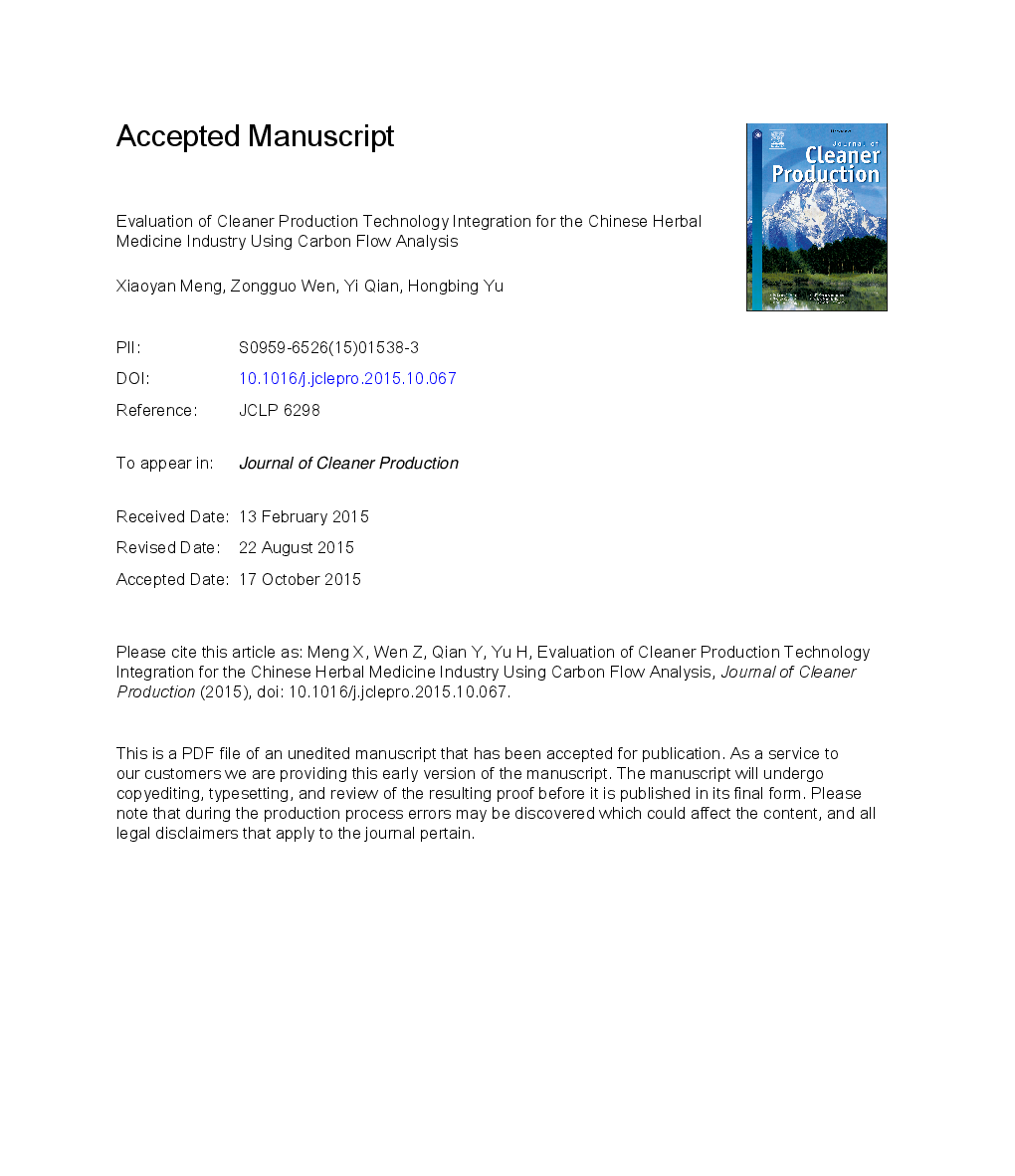ترجمه فارسی عنوان مقاله
ارزیابی ادغام فن آوری تولید پاک کننده برای صنعت طب گیاهی چینی با استفاده از تجزیه و تحلیل جریان کربن
عنوان انگلیسی
Evaluation of cleaner production technology integration for the Chinese herbal medicine industry using carbon flow analysis
| کد مقاله | سال انتشار | تعداد صفحات مقاله انگلیسی |
|---|---|---|
| 96234 | 2017 | 32 صفحه PDF |
منبع

Publisher : Elsevier - Science Direct (الزویر - ساینس دایرکت)
Journal : Journal of Cleaner Production, Volume 163, 1 October 2017, Pages 49-57
ترجمه کلمات کلیدی
اقتصاد کم کربن، بیو انرژی، تولید تمیزکننده، تجزیه جریان کربن، ارزیابی فناوری، زباله های صنعتی زباله،
کلمات کلیدی انگلیسی
Low-carbon economy; Bioenergy; Cleaner production; Carbon flow analysis; Technology assessment; Industrial biomass waste;

